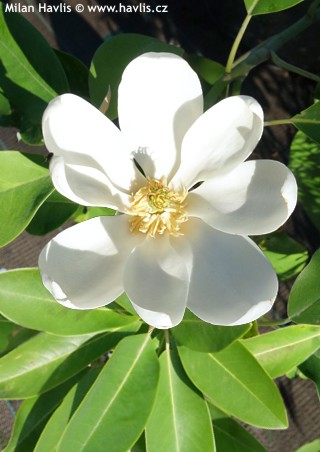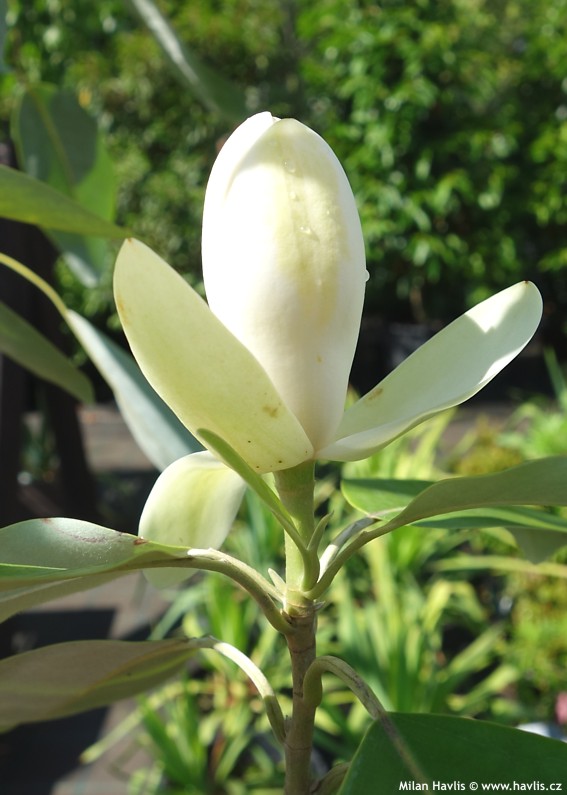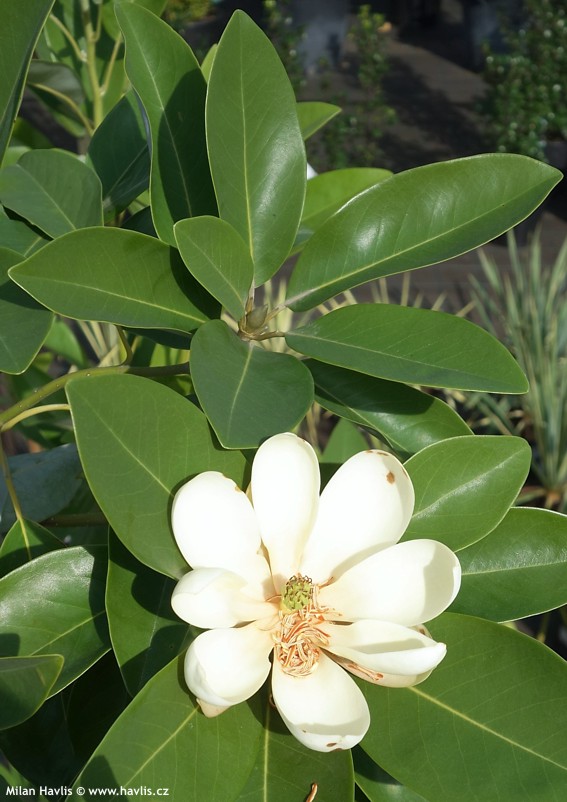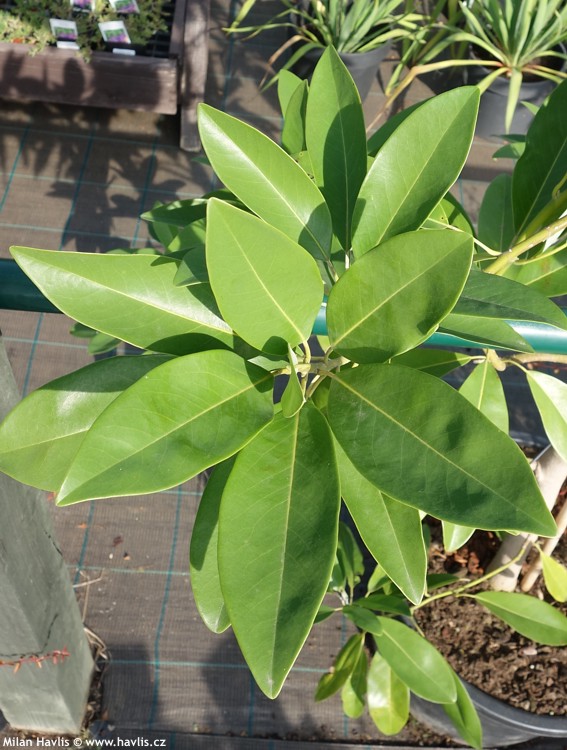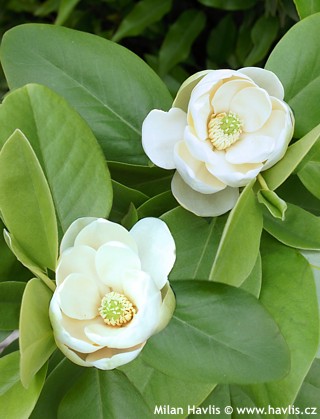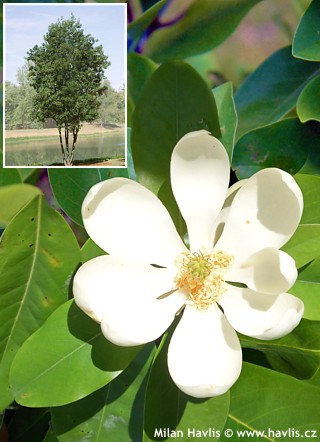Magnolia virginiana 'ICE CRYSTAL' sweet bay, swamp magnolia
size/type
taller shrub,taller shrub
usual height
3-5m
usual width
2-3m
leaves
semi-deciduous broadleaf
colour of leaves
flowers
showy
colour of flowers
blooming time
June-September
location
full to partial sun
USDA zone (lowest)
5b (down to -27°C)
winter protection
for zone 5+6

for zone 7

categorized
Magnolia
Ice Crystal is possibly the longest flowering sweet bay magnolia we have had so far. It makes 8-10 cm wide flowers from June until late September. They appear continuously one by one, never the whole shrub. Leaves are 15-20 cm long, widely obovate, deep green on the upper side and almost silvery green on the reverse. They are reliable evergreen only in the warmer zones, whereas in zones 5 and 6 they usually fall down by January. They are a little stronger than those on deciduous species but they are NOT leathery.Sweet bay magnolia is usually a fast grower, especially young plants. It naturally appears in moist and wet lands of SE USA which is why it is sometimes referred to as swamp magnolia. The ability to grow and also thrive in water-logged conditions makes it ideal for Central European clay-based soils that tend to hold water for longer than other plants may sustain. Also, it is quite hardy and has already withstood -27°C without a problem. Commonly it is rated hardy to USDA zone 5 with a remark that it might not be reliable at the coldest regions of zone 5.
Last update 14-10-2016
Description of the plant:
Sweet bay is a unique magnolia species that was first described by Carl Linnaeus, founder of modern taxonomy, already in 1753. Magnolia virginiana, that was the Latin name it received, was the very first magnolia species ever listed under this name. Interestingly, the plant had already been sent from America to England more than 50 years before that, by botanist John Baptist Banister. At that time the only magnolia known was a plant that was discovered on the island of Martinique by Charles Plumiére. Its local name was ‘talauma’. Magnolia virginiana was also the parent of later innovation known as bull bay magnolia – magnolia grandiflora.Imagine passing by a green bush with pretty leaves but before you even take a glance at it you are struck by a cloud of highly sweet and pleasant fragrance coming from flowers that are only about 7-11 cm across. As if moonstruck your nose is dragged closer to the plant in order to find the perfume source. Sticking your nose inside the flower is the last thing you remember for a few dozens of seconds. Got a picture? This is what sweet bay magnolia is about.
QUICK PRICE OVERVIEW
CURRENTLY SOLD OUT
WANT TO TRY A SIMILAR PLANT?












